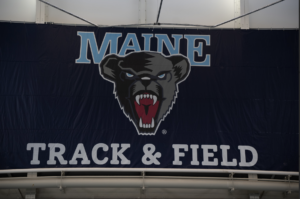Before coming to Santiago, I was vaguely aware that the Andes ran through Chile, but I did not realize how much of an impact this had on the outdoor sports scene. Because of the Andes, Chile has many well-known hikes, one of the most well-known being Torres del Paine in Patagonia.
There are two general options of what to do when you go to Torres del Paine. You can hike one of two different hikes, or, if you don’t want to hike and camp, you can take any number of day trips out of Puerto Natales.
With hiking, there are two common paths to take, the “O” circuit and the “W” route. The W route is far more popular, simply because it can be done in four to six days, while the O circuit usually takes eight days.
For my spring break, I am doing the W route, spending five days and four nights hiking the path in Torres del Paine National Park. Tons of effort goes into planning the trip — and the amount of effort required has become even greater in recent years. In the past, you could go to the park, pay your entry fee and camp at whatever site you got to without making reservations in advance. Now, the park requires you to make reservations at the campsites ahead of time, requiring you to decide exactly how many miles you want to do each day.
Another fact that influences the amount of preparation required is the availability of the campsites. Since Torres del Paine is in Patagonia, which is a part of Southern Chile, the winters there are brutal. In the winter, the average temperature at Torres is between 27 and 41 degrees Fahrenheit, while in the summer the average temperature is around 52 degrees Fahrenheit. The hardest element to deal with is the rain and the snow, which often come with large amounts of wind. Even during the summer, when the weather is warm, Torres del Paine receives a significant amount of rain.
Since the seasons are reversed here in Chile, we just started fall and the temperatures are cooling off. As such, the hiking season is coming to an end at Torres del Paine. This means that many of the campsites may be completely booked, causing you to have to change your plan about how much you are going to hike each day. When we booked our sites, two of the ones we wanted to stay at were completely full. Because of this, we had to change it so that one of our hikes is shorter than it was supposed to be, but as a result, the other is significantly longer. This is just one thing you have to consider when planning for Torres.
Another factor you have to plan for is simply getting to the park. Southern Chile is a lake and river region, where much of the land is hard to access due to the rivers and lakes, making some areas more desolate than the rest of the country. Due to this, in order to access the park, most people fly from Santiago to Punta Arena —, which is south of the park — and then take a bus ride to Puerto Natales. It is recommended that you spend that night at a hostel in Puerto Natales before taking the boat into the actual park to begin your hiking. After completing the W route, you have to take a boat back to Puerto Natales in order to take the bus to the airport and the plane back to Santiago.
When it’s all said and done, there is a lot that goes into this hike besides the actual hiking and camping. There is a lot of planning that has to happen ahead of time, as well as transportation to get to the park. When it’s all said and done, it is considered to be one of the most beautiful places in Chile and possibly the world.



